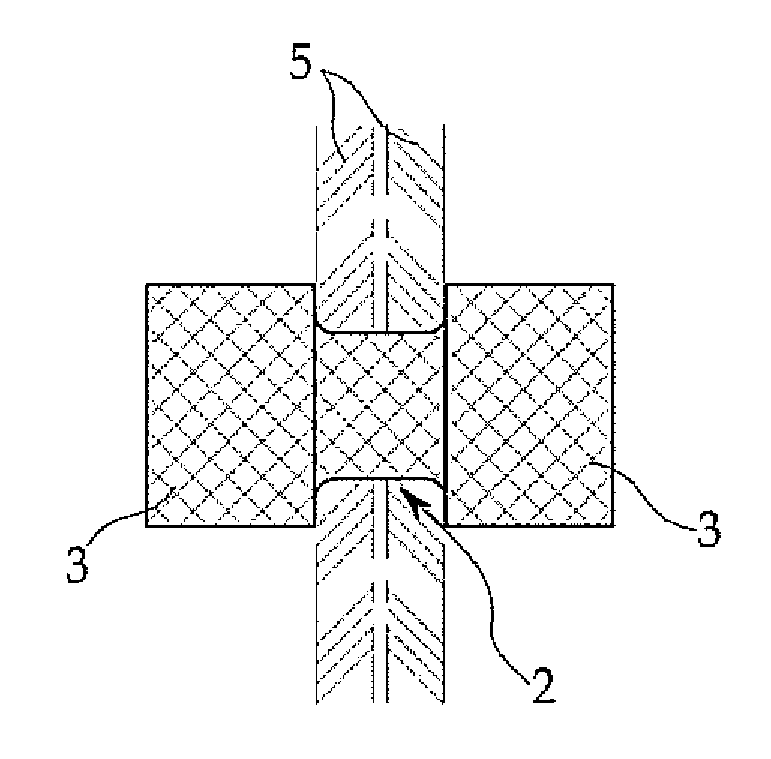Stent for connecting adjacent tissues of organs
a technology for connecting adjacent tissues and stents, which is applied in the field of connection stents, can solve the problems of difficult insertion of stents into the holes made in tissues, difficult gap between stents and tissues, and difficulty in discharge or shunting of bile or the like, and achieve the effect of ensuring the function of the stent and preventing leakag
- Summary
- Abstract
- Description
- Claims
- Application Information
AI Technical Summary
Benefits of technology
Problems solved by technology
Method used
Image
Examples
Embodiment Construction
[0033]Hereinafter, a preferred embodiment of the present invention will be described in detail with reference to the attached drawings.
[0034]A connection stent according to the present invention connects adjacent tissues of the organs, such as the gall bladder, pancreas, etc., of a patient in such a way that the adjacent tissues are pierced to form holes and the stent is inserted into the holes so that the tissues can communicate with each other, whereby a passage for an endoscopic operation or the like or for discharge or shunt of bile or the like is formed.
[0035]As shown in FIGS. 3 through 7, the connection stent according to the present invention includes a hollow cylindrical body 10 which is formed by weaving a superelastic shape-memory alloy wire in an overlapping manner such that a plurality of rhombic openings are formed, and wing parts 15 which are provided by expanding respective opposite ends of the hollow cylindrical body 10 outwards and turning them inside out on bent po...
PUM
| Property | Measurement | Unit |
|---|---|---|
| Thickness | aaaaa | aaaaa |
| Shape | aaaaa | aaaaa |
| Yield point | aaaaa | aaaaa |
Abstract
Description
Claims
Application Information
 Login to View More
Login to View More - R&D
- Intellectual Property
- Life Sciences
- Materials
- Tech Scout
- Unparalleled Data Quality
- Higher Quality Content
- 60% Fewer Hallucinations
Browse by: Latest US Patents, China's latest patents, Technical Efficacy Thesaurus, Application Domain, Technology Topic, Popular Technical Reports.
© 2025 PatSnap. All rights reserved.Legal|Privacy policy|Modern Slavery Act Transparency Statement|Sitemap|About US| Contact US: help@patsnap.com



